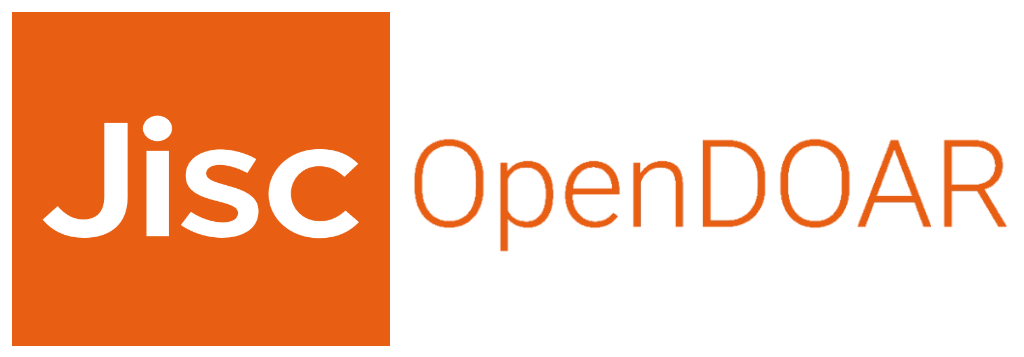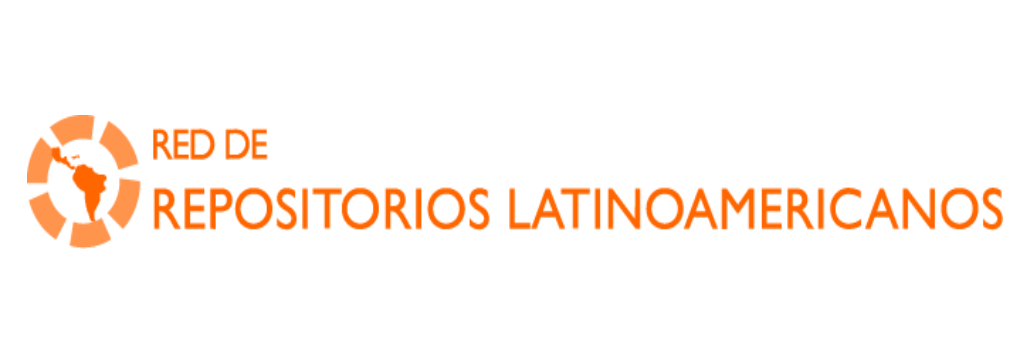Mostrar el registro sencillo del ítem
Plan de mejoramiento ambiental para el aprovechamiento de los residuos del cuero de las Pymes del sector del calzado ubicadas en el barrio El Restrepo
| dc.contributor.advisor | Cala Cristancho, Laura Milena | |
| dc.contributor.author | Acosta Rodriguez, Sandy Johanna | |
| dc.contributor.author | Alonso Perez, Melisa | |
| dc.date.accessioned | 2024-10-01T13:44:48Z | |
| dc.date.available | 2024-10-01T13:44:48Z | |
| dc.date.issued | 2023 | |
| dc.identifier.uri | https://repositorio.unicolmayor.edu.co/handle/unicolmayor/7121 | |
| dc.description.abstract | Con el presente trabajo se propone un plan de mejoramiento ambiental para el aprovechamiento de residuos del cuero de las MiPymes fabricadoras de calzado como zona de estudio, ya que en el sector del Restrepo las pequeñas empresas (MiPymes) no conocen formas de generar una viabilidad a los retazos de cuero producidos en la elaboración de calzado, ayudando a minimizar la huella de carbono y generando una economía circular con dicho residuo. Se realiza un estudio metodológico mediante a diez empresas de calzado centrado en encuestas y observación para el caso de estudio y su proceso productivo, identificando las fases de elaboración del calzado y en cual de esta se generan la mayor cantidad de retazos. En la observación se visualiza el proceso productivo que genera la cantidad de retazos del cuero por demanda de calzado, el cual se produce inicialmente por la alta demanda que genera el calzado de dama por ser el que más rota en el mercado. Se propone unas actividades de prevención en riesgos en la organización para la seguridad de los propietarios y operaros de las fábricas, con la finalidad de conocer como minimizar el impacto ambiental en los funcionarios, clientes y en la elaboración del producto. Como alternativa se propone un plan de mejoramiento mediante un flujo grama grupos de organización en las empresas donde proporcione estrategias de planeación, organización, revisión y control de las actividades encargadas por los miembros ambientalistas. Se brindan alternativas en el aprovechamiento de cuero interno en la organización y externo para entidades agropecuarios e industriales que contribuyan con el medio ambiente. | spa |
| dc.description.abstract | This work proposes an environmental improvement plan for the use of leather waste from MiPymes manufacturing footwear as a study area, since in the Restrepo sector small businesses (MiPymes) do not know ways to generate viability to the leather scraps generated in the production of footwear, helping to minimize the carbon footprint, and generating a circular economy with this waste. A methodological study is carried out using ten footwear companies focused on surveys and observation for the case study and its production process, identifying the phases of footwear production and in which of these the greatest amount of scraps are generated. The observation visualizes the productive process that generates the quantity of leather scraps due to the demand for footwear, which is initially produced due to the high demand generated by women's footwear, as it is the most popular type of footwear on the market. Risk prevention activities are proposed in the organization for the safety of the owners and operators of the factories, with the aim of knowing how to minimize the environmental impact on employees, customers and in the production of the product. As an alternative, an improvement plan is proposed by means of an organizational group flow chart in the companies that provides strategies for planning, organization, revision and control of the activities carried out by the environmental members. Alternatives are offered in the use of internal leather in the organization and external leather for agricultural and industrial entities that contribute to the environment. | eng |
| dc.description.tableofcontents | Contenido RESUMEN 6 ABSTRACT 7 INTRODUCCIÓN 8 PREGUNTA DE INVESTIGACIÓN 9 JUSTIFICACIÓN 9 OBJETIVOS 11 OBJETIVO GENERAL 11 OBJETIVOS ESPECÍFICOS 11 ESTADO DEL ARTE 12 MARCO TEÓRICO 14 SECTOR MANUFACTURERO DEL CALZADO EN BOGOTÁ14 GESTIÓN AMBIENTAL 14 IMPORTANCIA DE LA GESTIÓN AMBIENTAL 15 PILARES DE LA SOSTENIBILIDAD AMBIENTAL EN EL SECTOR DEL CALZADO 15 SOSTENIBILIDAD AMBIENTAL MANUFACTURERO 15 HUELLA DEL CARBONO MANUFACTURERO DEL CALZADO 16 MARCO LEGAL 16 NORMA ISO 14000 DEL 2015 17 MARCO GEOGRÁFICO 18 METODOLOGÍA 20 DISEÑO MUESTRAL 20 POBLACIÓN 20 TÉCNICAS E INSTRUMENTOS DE RECOLECCIÓN DE INFORMACIÓN 21 DESARROLLO 22 FASE 1. IDENTIFICACIÓN DE LOS PROCESOS EN LA FABRICACIÓN DEL CALZADO EN LA ZONA DE ESTUDIO 22 1.1 DISEÑO DE FORMATO DE ENCUESTA 22 1.2 FASES DE ELABORACIÓN DEL CALZADO 22 1.3 DEMANDA DE CALZADO FABRICADO 23 FASE 2. IMPACTOS AMBIENTALES EN LA FABRICACIÓN DE CALZADO EN LAS PYMES DE LA ZONA DE ESTUDIO 24 2.1 IDENTIFICACIÓN DEL PROCESO DE PRODUCCIÓN QUE GENERA LA MAYOR CANTIDAD DE RESIDUOS 24 2.2. ACTIVIDADES PARA DISMINUIR EL IMPACTOS Y RIESGOS AMBIENTALES 27 FASE 3. PROPUESTA DE PLAN DE MEJORAMIENTO AMBIENTAL PARA EL APROVECHAMIENTO DE LOS RESIDUOS DEL CUERO. 29 3.1 DISEÑO Y CONFORMACIÓN DEL GRUPO AMBIENTAL ORGANIZACIÓN 29 Funcionamiento del grupo ambiental 30 3.2 ALTERNATIVAS PARA APROVECHAR EL CUERO 30 Mejora el asfalto 31 Aislantes sonoros 31 Fabricación de compost 31 Limpieza de aguas 32 CONCLUSIONES 33 RECOMENDACIONES 35 BIBLIOGRAFÍA 36 ANEXOS 39 | spa |
| dc.format.extent | 39p. | spa |
| dc.format.mimetype | application/pdf | spa |
| dc.language.iso | spa | spa |
| dc.publisher | Universidad Colegio Mayor de Cundinamarca | spa |
| dc.rights | Derechos Reservados - Universidad Colegio Mayor de Cundinamarca, 2024 | spa |
| dc.rights.uri | https://creativecommons.org/licenses/by-nc/4.0/ | spa |
| dc.title | Plan de mejoramiento ambiental para el aprovechamiento de los residuos del cuero de las Pymes del sector del calzado ubicadas en el barrio El Restrepo | spa |
| dc.type | Trabajo de grado - Pregrado | spa |
| dc.contributor.corporatename | Universidad Colegio Mayor de Cundinamarca | spa |
| dc.description.degreelevel | Pregrado | spa |
| dc.description.degreename | Administrador(a) de Empresas Comerciales | spa |
| dc.publisher.faculty | Facultad de Administración y Economía | spa |
| dc.publisher.place | Bogotá D.C | spa |
| dc.publisher.program | Administración de Empresas Comerciales | spa |
| dc.relation.references | Ajidarma, P., Rahmadini, A., Trusaji, W., & Irianto, D. (2018). ISO 14001: 2015 Environmental management system design in a milk industry. International Journal of Applied Science and Engineering. | spa |
| dc.relation.references | Ambiental, L. D. G. (2004). Ley de gestión ambiental. Ley de gestión ambiental, codificación. | spa |
| dc.relation.references | Ávila, P. Z. (2018). Sustainability: a strong concept for humanity. Tabula rasa. | spa |
| dc.relation.references | Cardona Gallo, M. (2006). Minimización de residuos. una política de gestión ambiental empresarial. | spa |
| dc.relation.references | Chavarro, D., Vélez, M. I., Tovar, G., Montenegro, I., Hernández, A. & Olaya, A. (2017). Los Objetivos de Desarrollo Sostenible en Colombia y el aporte de la ciencia, la tecnología y la innovación. Documento de trabajo. | spa |
| dc.relation.references | Chojnacka, K., Skrzypczak, D., Kuligowski, K., ... & Kułażyński, M. (2021). Progress in sustainable technologies of leather wastes valorization as solutions for the circular economy. Journal of Cleaner Production. | spa |
| dc.relation.references | de Aburrá, Á. M. D. V. (2008). Guía para el manejo integral de Residuos. Subsector de calzado, cuero, plástico y sus manufacturas. | spa |
| dc.relation.references | Díaz-Bravo, L., Torruco-García, U., Martínez-Hernández, M., & Varela-Ruiz, M. (2013). La entrevista, recurso flexible y dinámico. Investigación en educación médica. | spa |
| dc.relation.references | Echeverri Flórez, H., & Paternina Uribe, R. (2016). "La madurez ambiental como estrategia para la competitividad en las pymes de salud. Revista salud uninorte | spa |
| dc.relation.references | Escobar, N. E. (2022). Ambiental. Las marcas de calzado que han tenido iniciativas por disminuir la huella de carbono. https://www.larepublica.co/responsabilidad-social/las- marcas-de-zapatos-que-han-tenido-iniciativa-por-disminuir-la-huella-de-carbono-3370581 | spa |
| dc.relation.references | Gaviria Duque, S., Gil Simancas, C. E.., González Carrillo, J. S., & Reyes López, D. L. (2017). Isobricks: aislantes sonoros a partir de retazos de cuero y almidón. Encuentro Internacional De Educación En Ingeniería. https://doi.org/10.26507/ponencia.663 | spa |
| dc.relation.references | González, R. (2011). La administración, el medio ambiente y la competitividad. Revista ciencia administrativa. https://www. Uv. Mx/iiesca/files/2012/12/ambiente2009-2. Pdf. | spa |
| dc.relation.references | Hernández, J., & Vizán, A. (2013). Lean manufacturing Conceptos, técnicas e implantación. Lean Manufacturing: A Strategy for Waste Reduction. .https://www.redalyc.org/pdf/3497/349733228009.pdf | spa |
| dc.relation.references | Lofrano, G., Meriç, S., Zengin, G. E., & Orhon, D. (2013) Chemical and biological treatment technologies for leather tannery chemicals and wastewaters. Science of the Total Environment. | spa |
| dc.relation.references | López, E. E. (2023). Industria del calzado logró la producción más alta de la década y ampliará capacidad. https://www.larepublica.co/empresas/industria-del-calzado-logro-la-produccion-mas-alta-de-la-decada-y-ampliara-produccion-3552446 | spa |
| dc.relation.references | Marrero, A. S. V., & Asuaga, C. (2021). Gestion Ambiental en las Organizaciones: Una revision de la literatura. Revista del Instituto Internacional de Costos. | spa |
| dc.relation.references | Ministerio de Ambiente, Vivienda y Desarrollo Territorial & Consejo Colombiano de Seguridad. (2003). Manejo ambiental de sustancias químicas en textiles. Guías Para Manejo Seguro y Gestión Ambiental de 25 Sustancias Químicas. | spa |
| dc.relation.references | Miranda Vela, S. A. (2017). Propuesta de modelo de gestión sostenible de residuos sólidos para mejorar la conciencia ambiental de los trabajadores. la universidad toribio rodríguez de Mendoza, Chachapoyas. | spa |
| dc.relation.references | Muriel, R. (2006). Gestión ambiental. Espacio de reflexión y comunicación en desarrollo sostenible. | spa |
| dc.relation.references | Ordóñez, C. A. I. G. (2017). La gestión ambiental en la competitividad de las pymes. Revista científica agro ecosistemas. | spa |
| dc.relation.references | Parisi, M., Nanni, A., & Colonna, M. (2021). Recycling of chrome-tanned leather and its utilization as polymeric materials and in polymer-based composites: a review. Polymers. | spa |
| dc.relation.references | Roberts, H., & Robinson, G. (2001). ISO 14001 EMS manual de sistemas de gestión medioambiental. Ediciones Paraninfo, SA. | spa |
| dc.relation.references | Senthil, R., Inbasekaran, S., & Sastry, T. P. (2015). Utilisation of finished leather wastes for the production of blended fabrics. Clean technologies and environmental policy. | spa |
| dc.relation.references | Velásquez Restrepo, S. M., Giraldo Vásquez, D. H., & Cardona Vásquez, N. (2015). Reciclaje de residuos de cuero: una revisión de estudios experimentales. Informador Técnico. | spa |
| dc.rights.accessrights | info:eu-repo/semantics/closedAccess | spa |
| dc.rights.creativecommons | Atribución-NoComercial 4.0 Internacional (CC BY-NC 4.0) | spa |
| dc.subject.proposal | Gestión ambiental | spa |
| dc.subject.proposal | Seguridad ambiental | spa |
| dc.subject.proposal | Aprovechamiento del cuero | spa |
| dc.subject.proposal | Plan de mejora | spa |
| dc.subject.proposal | Restrepo | spa |
| dc.type.coar | http://purl.org/coar/resource_type/c_7a1f | spa |
| dc.type.coarversion | http://purl.org/coar/version/c_970fb48d4fbd8a85 | spa |
| dc.type.content | Text | spa |
| dc.type.driver | info:eu-repo/semantics/bachelorThesis | spa |
| dc.type.redcol | https://purl.org/redcol/resource_type/TP | spa |
| dc.type.version | info:eu-repo/semantics/publishedVersion | spa |
| dc.rights.coar | http://purl.org/coar/access_right/c_14cb | spa |



















